What is PCB Plating?
PCB plating is the process of depositing a thin layer of metal onto the conductive surfaces of a printed circuit board. This metal layer serves several purposes, including:
- Improving electrical conductivity
- Enhancing durability and wear resistance
- Providing a solderable surface for component attachment
- Protecting the copper traces from oxidation and corrosion
The choice of plating method depends on various factors, such as the desired properties, cost, and specific application requirements.
Top 4 PCB Plating Methods
1. Electroplating
Electroplating is one of the most common PCB plating methods, widely used in the industry for its effectiveness and versatility. In this process, an electric current is used to deposit a layer of metal onto the conductive surfaces of the PCB. The board is immersed in an electrolytic solution containing dissolved metal ions, and an electrical current is applied, causing the metal ions to migrate and adhere to the exposed copper areas.
Advantages of Electroplating
- Provides a uniform and consistent metal layer
- Offers a wide range of metal options, such as copper, nickel, gold, and silver
- Achieves excellent adhesion between the plated layer and the base material
- Suitable for both through-hole and surface mount technology (SMT) boards
Disadvantages of Electroplating
- Requires a conductive surface to initiate the plating process
- Can be time-consuming and energy-intensive
- Involves the use of hazardous chemicals, necessitating proper waste management
Common Applications of Electroplating
Electroplating is widely used in the following applications:
- General-purpose PCBs
- High-density interconnect (HDI) boards
- Automotive and aerospace electronics
- Medical devices and equipment
2. Immersion Plating
Immersion plating, also known as displacement plating, is a chemical process that deposits a thin layer of metal onto the copper surfaces of a PCB without the use of an external electrical current. In this method, the board is immersed in a plating solution containing the desired metal ions. The metal ions in the solution displace the copper atoms on the surface of the board, resulting in the formation of a thin metallic layer.
Advantages of Immersion Plating
- Simple and cost-effective process
- Requires no external power source
- Produces a thin, uniform metal layer
- Suitable for both through-hole and SMT boards
Disadvantages of Immersion Plating
- Limited to thin metal layers (typically less than 1 micron)
- May not provide sufficient coverage in high-aspect-ratio holes
- Limited metal options compared to electroplating
Common Applications of Immersion Plating
Immersion plating is commonly used in the following applications:
- Low-cost consumer electronics
- Solderable finishes for PCBs
- Protective coatings for copper traces
- Pre-treatment for subsequent plating processes
3. Electroless Plating
Electroless plating is a chemical process that deposits a metal layer onto the PCB surface without the use of an external electrical current. In this method, the board is immersed in a plating solution containing a reducing agent and the desired metal ions. The reducing agent reacts with the metal ions, causing them to precipitate and adhere to the exposed surfaces of the board.
Advantages of Electroless Plating
- Produces a uniform metal layer, even on non-conductive surfaces
- Achieves excellent coverage in high-aspect-ratio holes
- Offers good adhesion between the plated layer and the base material
- Suitable for both through-hole and SMT boards
Disadvantages of Electroless Plating
- More expensive than electroplating and immersion plating
- Requires careful control of the plating solution composition and temperature
- May have a slower deposition rate compared to electroplating
Common Applications of Electroless Plating
Electroless plating is widely used in the following applications:
- High-reliability PCBs for aerospace and defense
- Multilayer boards with high-aspect-ratio vias
- Flexible and rigid-flex PCBs
- Shielding and electromagnetic interference (EMI) protection
4. Brush Plating
Brush plating, also known as selective plating or spot plating, is a manual plating process that deposits a metal layer onto specific areas of a PCB using a brush or a pen-like applicator. In this method, the plating solution is applied directly to the desired areas, and an electric current is passed through the applicator to initiate the metal deposition.
Advantages of Brush Plating
- Allows precise and selective plating of specific areas
- Suitable for rework and repair of PCBs
- Can be performed on assembled boards without affecting other components
- Requires minimal equipment and setup
Disadvantages of Brush Plating
- Labor-intensive and time-consuming process
- Relies on the skill and experience of the operator
- May produce inconsistent results compared to automated plating methods
Common Applications of Brush Plating
Brush plating is commonly used in the following applications:
- Prototype and small-batch PCB production
- Rework and repair of damaged or defective boards
- Selective plating of connectors and contact points
- Shielding and grounding of specific areas on the board
Comparison Table of PCB Plating Methods
| Plating Method | Advantages | Disadvantages | Common Applications |
|---|---|---|---|
| Electroplating | – Uniform and consistent metal layer – Wide range of metal options – Excellent adhesion |
– Requires conductive surface – Time-consuming and energy-intensive – Uses hazardous chemicals |
– General-purpose PCBs – HDI boards – Automotive and aerospace electronics – Medical devices |
| Immersion Plating | – Simple and cost-effective – No external power source needed – Uniform thin metal layer |
– Limited to thin metal layers – May not cover high-aspect-ratio holes – Limited metal options |
– Low-cost consumer electronics – Solderable finishes – Protective coatings – Pre-treatment for other plating |
| Electroless Plating | – Uniform layer on non-conductive surfaces – Excellent coverage in high-aspect-ratio holes – Good adhesion |
– More expensive than other methods – Requires careful control of solution – Slower deposition rate |
– High-reliability PCBs – Multilayer boards with high-aspect-ratio vias – Flexible and rigid-flex PCBs – Shielding and EMI protection |
| Brush Plating | – Precise and selective plating – Suitable for rework and repair – Can be done on assembled boards – Minimal equipment needed |
– Labor-intensive and time-consuming – Relies on operator skill – May produce inconsistent results |
– Prototype and small-batch PCBs – Rework and repair – Selective plating of connectors – Shielding and grounding of specific areas |

Frequently Asked Questions (FAQ)
1. What is the most common PCB plating method?
The most common PCB plating method is electroplating, which is widely used in the industry for its effectiveness, versatility, and ability to produce a uniform metal layer. Electroplating is suitable for a wide range of applications, from general-purpose PCBs to high-density interconnect boards.
2. Can immersion plating produce thick metal layers?
No, immersion plating is limited to producing thin metal layers, typically less than 1 micron in thickness. This is because the process relies on the displacement of copper atoms by the metal ions in the plating solution, which limits the amount of metal that can be deposited.
3. Is electroless plating suitable for non-conductive surfaces?
Yes, electroless plating is capable of depositing a uniform metal layer on non-conductive surfaces, as it does not require an external electrical current. This makes it suitable for applications where a conductive surface is not available or when plating high-aspect-ratio holes.
4. When is brush plating used in PCB manufacturing?
Brush plating is typically used for selective plating of specific areas on a PCB, such as connectors, contact points, or damaged regions that require repair. It is also useful for prototype and small-batch PCB production, where precise and localized plating is needed.
5. How do I choose the right PCB plating method for my application?
Choosing the right PCB plating method depends on various factors, such as the desired properties, cost, and specific application requirements. Consider the advantages and disadvantages of each plating method, as well as the common applications they are suited for. Consult with a PCB manufacturer or a plating expert to determine the best plating method for your specific needs.
Conclusion
PCB plating is a critical process in the manufacturing of printed circuit boards, ensuring reliable electrical connections, enhanced durability, and improved overall performance. The four main types of PCB plating methods – electroplating, immersion plating, electroless plating, and brush plating – each have their unique advantages, disadvantages, and applications. Understanding these plating methods and their characteristics is essential for selecting the most suitable option for your specific PCB project. By working closely with experienced PCB manufacturers and plating experts, you can ensure that your printed circuit boards meet the highest standards of quality and reliability.
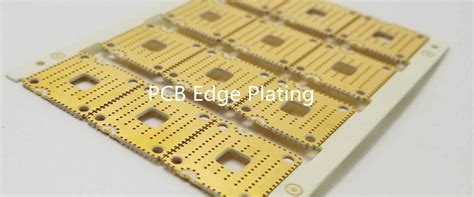
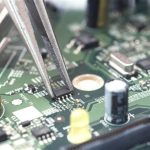
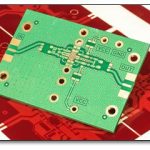
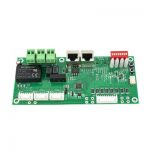
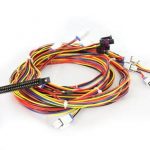
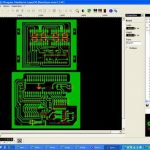
Leave a Reply